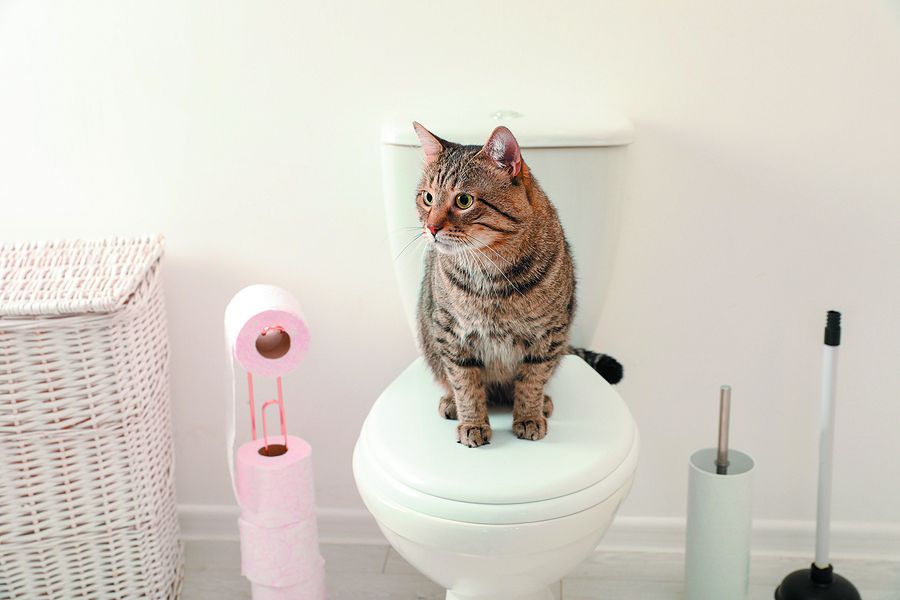Why You Must Never Flush Cat Poop Down Your Toilet - Critical Facts
Why You Must Never Flush Cat Poop Down Your Toilet - Critical Facts
Blog Article
We've discovered the article pertaining to How to Dispose of Cat Poop and Litter Without Plastic Bags down the page on the net and thought it made good sense to talk about it with you on this site.

Intro
As feline proprietors, it's essential to bear in mind how we throw away our feline close friends' waste. While it may appear hassle-free to flush cat poop down the bathroom, this method can have destructive repercussions for both the setting and human wellness.
Alternatives to Flushing
Thankfully, there are safer and extra responsible methods to take care of feline poop. Take into consideration the adhering to alternatives:
1. Scoop and Dispose in Trash
The most common technique of taking care of cat poop is to scoop it right into a biodegradable bag and throw it in the trash. Make sure to make use of a specialized clutter scoop and throw away the waste promptly.
2. Use Biodegradable Litter
Go with eco-friendly pet cat clutter made from materials such as corn or wheat. These litters are eco-friendly and can be securely dealt with in the garbage.
3. Bury in the Yard
If you have a lawn, take into consideration hiding cat waste in a designated area away from veggie yards and water resources. Make certain to dig deep enough to prevent contamination of groundwater.
4. Install a Pet Waste Disposal System
Invest in an animal waste disposal system especially made for feline waste. These systems use enzymes to break down the waste, minimizing odor and ecological impact.
Wellness Risks
In addition to environmental worries, flushing pet cat waste can also pose wellness threats to humans. Cat feces might include Toxoplasma gondii, a bloodsucker that can trigger toxoplasmosis-- a potentially severe illness, particularly for pregnant ladies and people with weakened immune systems.
Environmental Impact
Flushing cat poop introduces harmful microorganisms and bloodsuckers into the water system, posturing a considerable threat to marine ecosystems. These impurities can negatively impact aquatic life and compromise water quality.
Final thought
Accountable family pet possession extends past supplying food and shelter-- it likewise includes appropriate waste monitoring. By avoiding purging feline poop down the bathroom and going with alternate disposal methods, we can minimize our ecological footprint and safeguard human health and wellness.
Why Can’t I Flush Cat Poop?
It Spreads a Parasite
Cats are frequently infected with a parasite called toxoplasma gondii. The parasite causes an infection called toxoplasmosis. It is usually harmless to cats. The parasite only uses cat poop as a host for its eggs. Otherwise, the cat’s immune system usually keeps the infection at low enough levels to maintain its own health. But it does not stop the develop of eggs. These eggs are tiny and surprisingly tough. They may survive for a year before they begin to grow. But that’s the problem.
Our wastewater system is not designed to deal with toxoplasmosis eggs. Instead, most eggs will flush from your toilet into sewers and wastewater management plants. After the sewage is treated for many other harmful things in it, it is typically released into local rivers, lakes, or oceans. Here, the toxoplasmosis eggs can find new hosts, including starfish, crabs, otters, and many other wildlife. For many, this is a significant risk to their health. Toxoplasmosis can also end up infecting water sources that are important for agriculture, which means our deer, pigs, and sheep can get infected too.
Is There Risk to Humans?
There can be a risk to human life from flushing cat poop down the toilet. If you do so, the parasites from your cat’s poop can end up in shellfish, game animals, or livestock. If this meat is then served raw or undercooked, the people who eat it can get sick.
In fact, according to the CDC, 40 million people in the United States are infected with toxoplasma gondii. They get it from exposure to infected seafood, or from some kind of cat poop contamination, like drinking from a stream that is contaminated or touching anything that has come into contact with cat poop. That includes just cleaning a cat litter box.
Most people who get infected with these parasites will not develop any symptoms. However, for pregnant women or for those with compromised immune systems, the parasite can cause severe health problems.
How to Handle Cat Poop
The best way to handle cat poop is actually to clean the box more often. The eggs that the parasite sheds will not become active until one to five days after the cat poops. That means that if you clean daily, you’re much less likely to come into direct contact with infectious eggs.
That said, always dispose of cat poop in the garbage and not down the toilet. Wash your hands before and after you clean the litter box, and bring the bag of poop right outside to your garbage bins.
https://trenchlesssolutionsusa.com/why-cant-i-flush-cat-poop/

I was guided to that article on How to Dispose of Cat Poop and Litter Without Plastic Bags through a friend on another domain. Appreciated our posting? Please share it. Let someone else check it out. Thanks a lot for your time spent reading it.
Prices & Booking Report this page